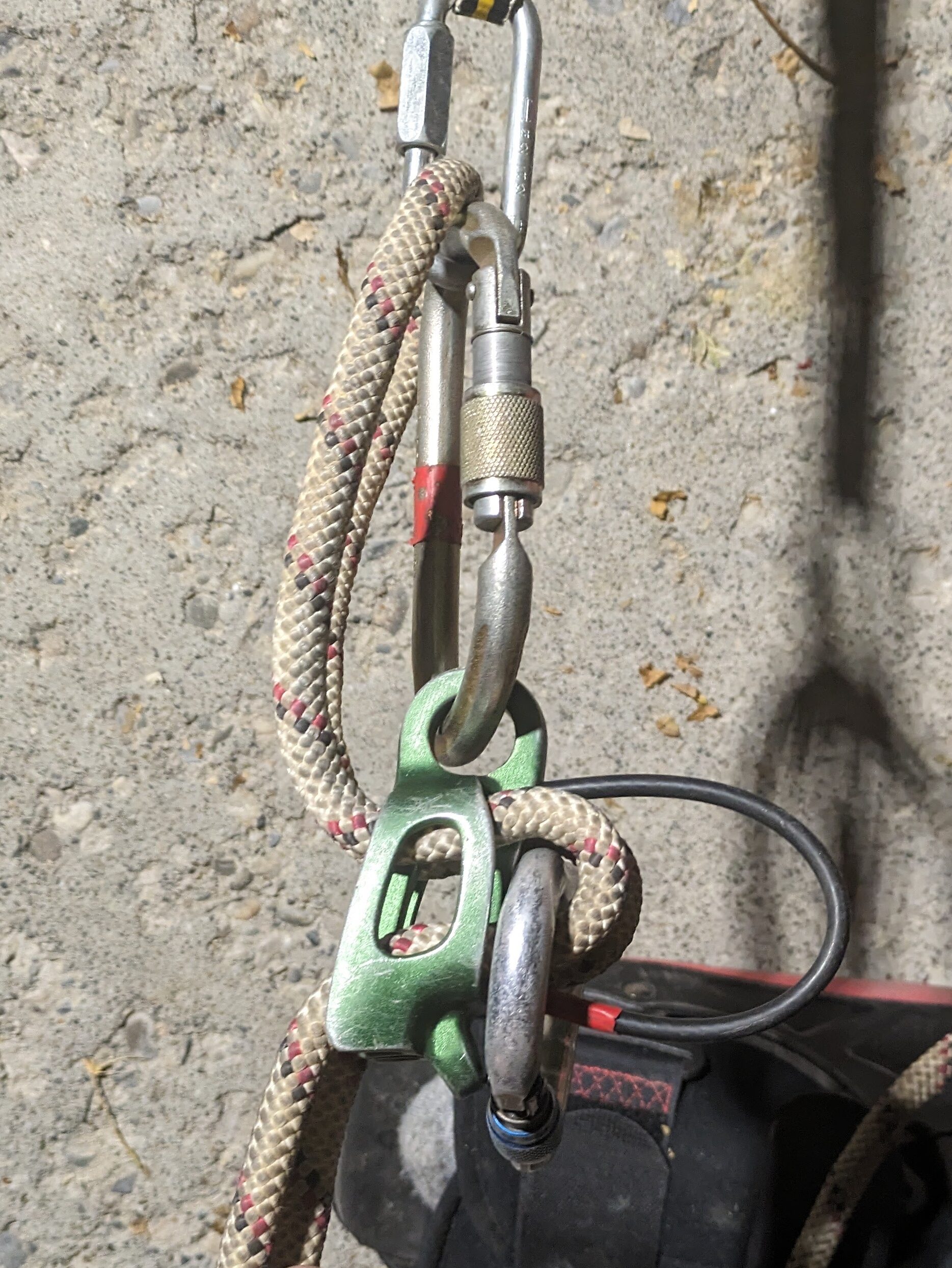Contingency Rigging
Contingency rigging is generally used to refer to rigging easily convertible to lower. In some situations pre rigging for a possible haul, or possible haul or lower, is prudent. These situations are rare.
Figure 8 blocks, a Munter Mule Overhand(MMO), or Munter Half Hitch Overhand, are common forms of contingency rigging. If the rope length was set too short, or someone becomes stuck on rope, they can easily be lowered.
These are both single rope systems, with one side in service and the other hopefully in a bag.
Twin Releasable Systems
In the past, I used Jester rigging on the Rock Exotica Totem quite often in canyons. I was leading large groups of around 12 people, most of them inexperienced. Getting a group like this down a rappel takes a while.
With a twin releasable system, while one person is rappelling down one strand, someone can be rigging their rappel device on the other. When the first person is on the ground, the other can start rappelling, while the first disconnects their device.
If the rappeler needs to be lowered, the person on top can disconnect and the rappeler can easily be lowered.
Note: On the Totem, smaller diameter or more slippery ropes have been known to slide through. Unless someone is holding or rigging onto the other side, a slipknot should be tied. In past testing, the slipknot prevented more rope from sliding through, but was easily released, even under significant tension.





Why not an ATC?
So why couldn’t this work on an ATC? I’ve seen a photo of someone using the system in the field. Tubular belay devices like the ATC are thought to provide more friction than old school plaquette devices, like the Kong GiGi.
I rigged it, and it looks pretty good.

For many of the connections, be it to come along hooks or shackles, I tied off with a Super Munter, so I could untie the knots after testing. These hitches settling and tightening did cause some noise on the test data.

Results
The PMI EZ bend was used as an extreme example. Recreational canyoneers usually use smaller diameter and more supple ropes. By testing the extremes, and some more common ropes, I hoped I’d be able to see some trends.
On the EZ Bend, Jester rigging with an ATC never slipped. The results were kind of confusing, with one Totem trial behaving more like an ATC.
I’m not comfortable drawing conclusions from these trials, other than a) both held a significant amount of force and b) more nesting may be needed.



The Sterling Canyon Lux, a notoriously slippery 8mm rope, slipped fairly freely on the Totem, at about half a kilonewton, less than most people’s body weight. Slightly concerning.

Conclusions
Disclaimer: a small number of backyard testing does not prove something is a good idea.
In all cases, I was able to release and lower through the Jester rigging. Sometimes smoother than others.
In every case, the ATC held equal or more force than the Totem.
This isn’t exactly how the ATC guide is meant to be used, but it’s close. It’s also another variety of plaquette device, like the Totem is, but designed to have more friction.
I don’t think using Jester rigging on an ATC is unsafe, but use at your own risk.

Leave a Reply